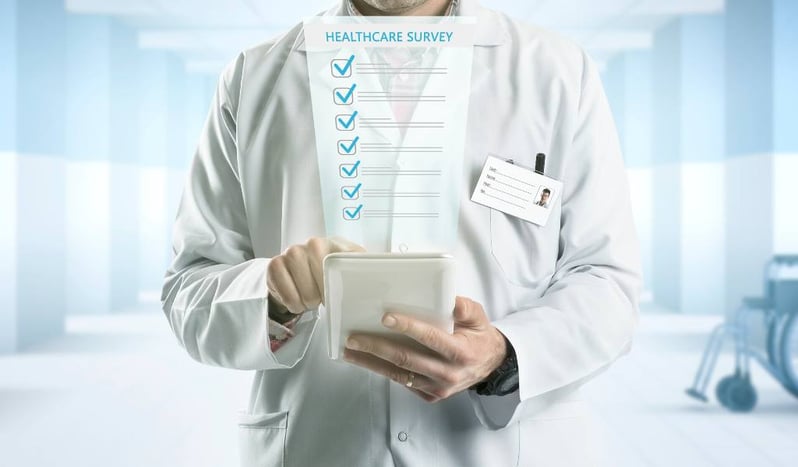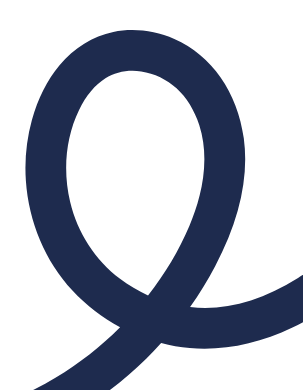As a Senior Associate at Techspert, I ensure customers connect to the right experts using our AI...
When it comes to engaging experts for primary research, there are different formats you can choose from depending on your requirements, resources, and desired outcome. For instance, if you need quick quantitative insights from a large group of specialists, a survey is an effective option. Alternatively, if you need deep qualitative knowledge, a one-to-one interview is a powerful option to source truly unique and relevant insights of the kind your competition may not have access to.
Below we explore seven different expert engagement formats and their benefits to help you decide which method would be the most effective for your project.

One-to-one telephone call
This format is perfect for deepening your understanding of a topic and obtaining qualitative industry insight from experts with on-the-ground experience, quickly. It’s also great if you have no materials to share or analyze during the discussion. The typical length for one-on-one calls is one hour but they can be longer. It all boils down to your requirements.
For instance, a management consulting company conducting a research project as part of a strategy for one of their end-clients needed to connect with KOLs in gastroenterology. The KOLs needed to be experienced in treating patients with gastroparesis to help deepen the consultancy’s insights and enable them to add value beyond their competitors’ ability.
Because of the depth of insights the consultancy wanted to obtain and the range of topics they wanted to explore, they requested and received 90-minute qualitative interviews with precision-matched specialists we sourced for them.
Other benefits of calls include the ability to record them (with consent from all involved) and ease of connection for both parties. With the absence of potential technology and internet connection issues; experts can join a call from anywhere making it a convenient method of connection. Additionally, some organizations’ firewalls can block internet access and/or screen-sharing, making a direct telephone call easier.
Survey
Surveys are ideal for projects requiring quick insights and large quotas. So, if you need a range of swift, quantitative insights from a large group of experts, a survey is your go-to format.

The benefits of surveys include giving specialists more time to think about their answers instead of having to think/talk on the spot and analyzing survey responses/results can be less time consuming than other formats. The information obtained from surveys is often in a clear structure, making quantitative analysis easier and the extract of information for further analysis simpler.
Surveys are also great for projects where you require specific responses in comparison to a call that can cover more of a general landscape, or longer, more detailed responses.
For example, a global investment management firm asked us to find them 50 intensivists treating distributive shock – a medical condition resulting from excessive widening of blood vessels and inadequate distribution of blood flow to the body's tissues and organs – to complete a quantitative survey for their project.
Because the customer wanted quick, quantitative insight from a large group of specialists, a survey was the perfect format for this project.
Our top tips when compiling surveys are to keep the format quick. A survey shouldn’t take a respondent more than 20 minutes to complete and it should have close-ended questions or multiple-choice for more effective insights.
If your survey is pre-programmed and ready to send, we’ll handle getting the responses for you. If it isn’t ready to send, we can programme it and disseminate it on your behalf.
Dyad
The dyad (a group of two things or two people) format is ideal when you want to get insights from two specialists on a given topic at the same time. So, the engagement structure is typically two experts – the dyad – and one host, you. It’s also possible for the end-client to join if required but remember to get consent from all parties involved.
There are different options to choose from for a dyad including a conference call, an in-person meeting, or a video call. Depending on your requirements, choose the method that will help you meet your objectives.
Examples of projects that could require two types of experts include needing insight from two different clinicians to better understand a condition that they’re both involved in treating, a Sales Director and a Chief Marketing Officer to get insight on developing a go-to-market strategy, a Head of R&D and a CFO to understand how companies decide on product development in relation to finances, or market research that requires a physician and a payer. The duos are endless!
Web-assisted TDI with screen share
Web-assisted TDIs (tele-depth interviews) with screenshare are great for discussing project topics and showing information, such as statistics, for experts to analyze during the call. TDIs should be used for projects where pre-read materials can’t be sent in advance (due to confidentiality) but require statistical input and/or analysis from an expert.

In life sciences, TDIs are ideal for TPPs (target product profiles) where you can show slides on anonymized products and experts can analyze a range of questions.
For instance, many of our customers use TDIs and TPPs to discover whether the medical composition of a drug would be effective, how you might market the drug to physicians and/or hospital formularies, what the side effects might be, and whether you can or can’t use the product/s alongside other medications.
Focus group/roundtable
If your project requires getting a range of insights from a group of experts on the same topic at the same time, a focus group or roundtable would be the most effective option. This format is also ideal for projects with many stakeholders. Let’s have a look at an example.
A communications agency developing an advertising and marketing strategy to improve compliance and protocols in intensive care units asked us to arrange in-person focus groups with nurses. By choosing this method, the agency was able to interact directly with the knowledge holders and get deep insight from them, obtain a wide range of opinions, gather data quickly, uncover ideas they hadn’t considered and this format gave them the flexibility of diving deeper into topics that came up during the discussion.
An important factor to bear in mind when considering an in-person focus group is budget. There are many additional costs for this option such as expert honorarium for a whole or half-day, travel, food, accommodation and venue booking expenses.
This is when virtual focus groups come in handy. You can save on the expenses associated with in-person focus groups, and the virtual format also makes it easier to include stakeholders from different geographies if that’s a requirement for your project.
Data review
You should use this format when data has been found and conclusions have already been drawn on any given topic and you need experts to analyze and verify these conclusions.
Having specialists analyze your data can help you get alternative perspectives to your findings, organize your data more effectively, and get an expert’s opinion on any data results from your experiments.
Data reviews can run for as many hours as you need. It’s vital to let the experts know how long the review will last and be clear with them on the desired outcome of the review to avoid any confusion or disappointment.

This engagement format can also be effective when you pair it with another. For instance, a consulting firm working on a breast cancer project asked us to split their expert engagements into two phases. Stage one was one-on-one calls with the specialists, allowing the consultancy to get deep, qualitative insight on the topic. And stage two was follow-up data reviews with the same experts, enabling the firm to get a professional analysis on their findings.
By combining the two methods, the consultancy deepened their findings and supplemented their project with expert insight.
In-person interview
In-person interviews can be used for any type of project. Once again, it depends on your requirements and desired outcome. This format lends itself to longer, more in-depth discussions, and it can help foster relationships between you and the experts which may help with engaging the expert for future projects.
So, if a face-to-face engagement is the easiest format for you based on what you’d like to discuss then go for it.
When using this format, remember to get the expert’s consent, especially if you’re going to conduct the interview at the expert’s house or place of work. Also, similar to focus groups, bear in mind potential additional expenses with this method such as travel.
Ultimately, no one expert engagement format is better than the other. It all boils down to what your requirements, resources and desired outcomes are.
So, to briefly recap:
- One-to-one calls are a quick and easy format for deepening your understanding of a topic and obtaining qualitative insight from experts.
- Surveys are ideal when you need to get a range of quick quantitative insights on a topic from a large group of experts.
- Dyads are great when you want to get insights from two specialists on a given topic at the same time.
- Web-assisted TDI with screen share should be your go-to when you need to share information for experts to analyse during the call.
- Focus groups/roundtables, in-person or virtual, are effective when you require a range of insights from a group of experts on the same topic at the same time.
- Data reviews should be your choice when you have the data and conclusions have already been drawn and you need experts to analyze and verify these findings.
- In-person interviews can be used for any type of project making them an ideal format for longer, more in-depth discussions.
Hopefully, this blog post will be handy the next time you need to decide which format to use for your next expert engagement!
Regardless of the engagement format, we can connect you with world-leading experts. Tell us about your project today!






